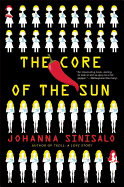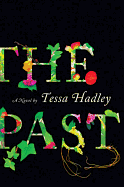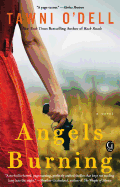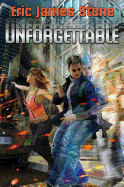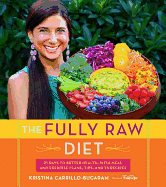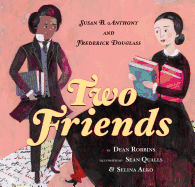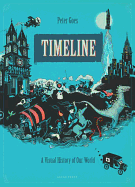.JPG) |
| photo: Bob O'Connor |
Perhaps best known for her TED Talk "Your Body Shapes Who You Are," Amy Cuddy is a professor and researcher at Harvard Business School who studies how nonverbal behavior and snap judgments affect people. Her book Presence: Bringing Your Boldest Self to Your Biggest Challenges (Little, Brown) aims to give people the tools to feel personally powerful when facing challenging situations.
What was it like to go from researcher to TED speaker to author?
I barely knew what TED was, and I certainly did not think it was something I would ever do. When you are invited to speak, you don't know what kind of audience you'll get, or if it will be posted to the main site; without knowing whether what you say will be shared broadly, you're really giving your talk to that audience at that venue. There's no way to create a sense of intimacy with future strangers, but you can connect with the people who are there.
After the talk, all these agents and publishers wrote, and I just said no to everything. I said to my friends, I'm not going to write a book until it's in my head--not just a cover and introduction, but the entire book. I didn't write anything, but then I found an agent I could really connect with, who would really let me do my thing.
I wanted to take everything I was hearing from people outside the ivory tower and share it. People want to learn, and they want this information in their lives, but not everyone can attend a TED Talk. Being in the audience is great, but that's not all those talks are about. They're really about the millions and millions of people who get to listen for free.
How does Presence address ideas about power?
In my book, I mention what David Grohl said about singing a song to 85,000 people and having them sing it back to you for 85,000 different reasons. That's what happened after TED. I have heard so many different versions of my idea, but every story has that thread of feeling powerless. This is what links us, and that's what the book is about.
This idea of presence is so scary. For so many people, it seems like something inapproachable, like it's for fancy people or another group you don't feel you belong to. It's the same thing you get from people when you mention mindfulness. There's this idea that it's for rich people or another exclusive group. But presence is for everyone. Presence comes down to this: start with the body instead of the mind. Mindfulness practices that are not body-oriented are tough for so many of us. You just feel like you can't get there. When you're in a dark place, your mind is fighting your mind. If you get your body to do it, your mind doesn't even know what's happening. The techniques I describe in the books are a way of stopping that fight from happening. I want to show people that it's really about moments, and there's a science here that will help people face challenges.
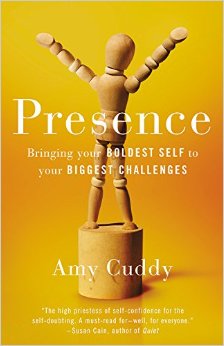 Given the number of stories you've received from people since your TED Talk, how did you select the ones that appear in Presence?
Given the number of stories you've received from people since your TED Talk, how did you select the ones that appear in Presence?
When I submitted my book, the chapter where I share a few stories was many times longer than it is now. I needed my editor to go through them. My editor knew I wanted to honor every person. In the end, the stories selected were the ones that also represented other stories. It was important to me that we don't just talk about how presence applies to job interviews and other business applications. Those feel obvious to me. I wanted to show more applications of presence for people who have no power or status. Having presence is something that doesn't require money or power or a place in the hierarchy or technology to do. No one is excluded from this. A few people with disabilities wrote to me and told me they imagine themselves in these power poses and feel the effects. There were so many people who wrote to me about what they do. I don't even think they were saying they got the idea from me. They were sharing: this is what we're doing; it works.
How does Presence connect with and contribute to current discussions about equality, race and other issues?
By training, I am a stereotyping researcher. As somebody who studies racism and sexism, I can say quite frankly that it is very easy to document racism and sexism; it's tragic how easy it is. What's almost impossible is to find interventions that erase them. It's hard to be in a field like this when half the world seems to think there's no prejudice anymore no matter how much research and evidence you show to the contrary, and the other half want to know what they can do, and we don't have answers. One of the most interesting findings, in a group stereotyped regularly, is that ambiguity throws people off--wondering whether the experience you're having is rooted in prejudice or just a matter of how you're reading the situation is really distracting and takes you out of the moment. It takes you away from the present. When that happens, you start to feel powerless. Presence gives people a way to best represent themselves even in these unfair circumstances.
In Presence, you show how women and others who haven't traditionally been in positions of power face additional barriers to attaining presence. I felt invigorated by your call for us to change these patterns. How do you see that change coming about?
I hope that anyone who feels powerless can recognize when they start to collapse on themselves or fall in this way. I hope they can see the collapse as a sign of powerlessness and lift their body to bolster themselves. I really want girls to learn that you can carry yourself with pride and power and still be a girl. In the book, I discuss how by the age of six children show a definite male-power bias, meaning they see signs of power as being a distinctly masculine trait and powerlessness as female. Seeing this ideology manifest in body language changes is heartbreaking. I want kids to see images like Misty Copeland, a dancer who is amazing, proud and powerful in one of the most traditionally feminine forms of expression that exists. She carries herself with power. That's the image we need girls to see. If we want to keep girls from being powerless, we need to intervene very early.
Given the response to your TED Talk, what effect do you hope your book will have?
I do hope that people start to harness the power of the body much more broadly than power poses. I want people to have a sense of relief when they can just do this one thing, when they can catch themselves hunched over a phone and readjust their body, knowing the effect it can have. The idea of the body leading the mind is just beginning to be explored, and we're really getting that it's huge, just as big as the mind-body. When our body leads our mind, we have so much more power to change things. What I talk about in Presence is just the tip of the iceberg as far as I'm concerned. --Justus Joseph, bookseller at Elliott Bay Book Company
Amy Cuddy: Beyond Power Poses





.JPG)
 Given the number of stories you've received from people since your TED Talk, how did you select the ones that appear in Presence?
Given the number of stories you've received from people since your TED Talk, how did you select the ones that appear in Presence?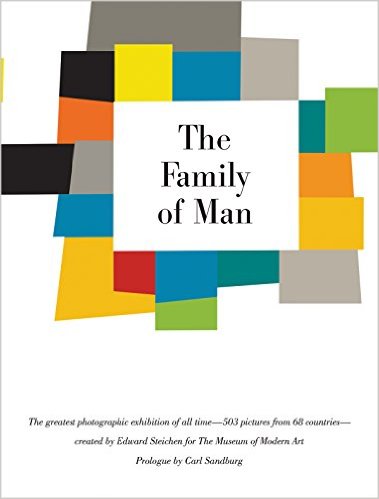 The Family of Man was a monumental photography exhibition first displayed by the Museum of Modern Art in 1955. Edward Steichen (1879-1973), director of the museum's photography department, curated 503 images from 273 photographers in 69 countries into a portrayal of the oneness of all humankind, showing man as a global family whose similarities transcend cultural barriers. Over the next eight years, the exhibition traveled to 37 countries and resonated with nine million viewers. Today it can be seen at Clervaux Castle in Steichen's native Luxembourg.
The Family of Man was a monumental photography exhibition first displayed by the Museum of Modern Art in 1955. Edward Steichen (1879-1973), director of the museum's photography department, curated 503 images from 273 photographers in 69 countries into a portrayal of the oneness of all humankind, showing man as a global family whose similarities transcend cultural barriers. Over the next eight years, the exhibition traveled to 37 countries and resonated with nine million viewers. Today it can be seen at Clervaux Castle in Steichen's native Luxembourg.